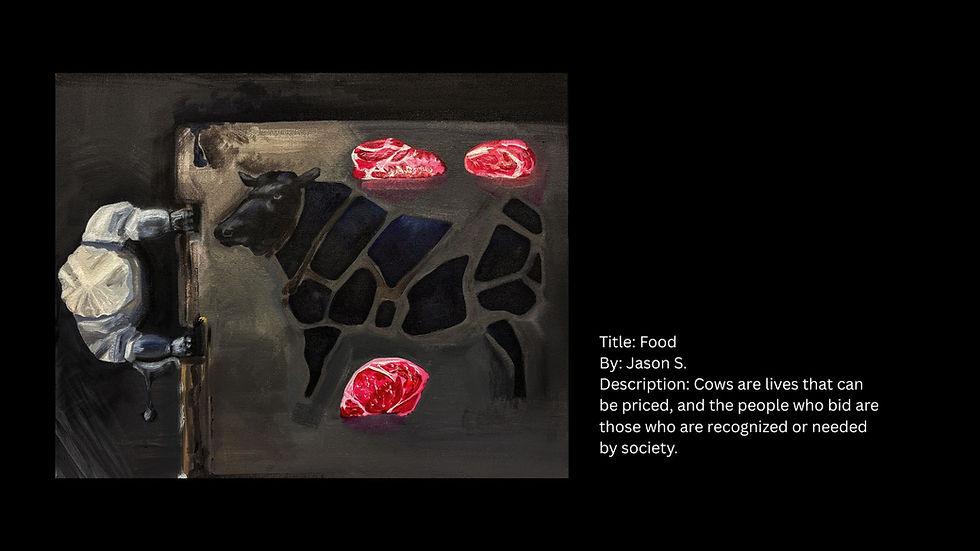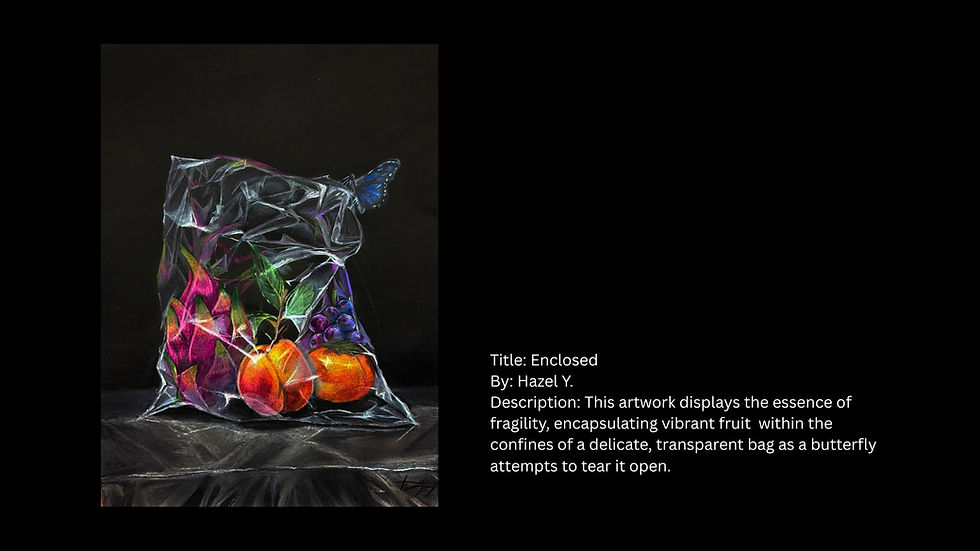Exploring the Significance of a High School Major Base and Supplemental Art Portfolio
- The Artist Lab

- Aug 11
- 4 min read
As high school students approach the critical crossroads of deciding their academic and career futures, many find themselves exploring specialized fields and pursuing specific interests. For students with a passion for the arts, this journey often involves honing their skills in a structured manner while simultaneously building a comprehensive art portfolio. But in the realm of arts education, there’s a specific question that lingers: How significant is a high school major base, and why is a supplemental art portfolio so essential?
Understanding the High School Major Base
A high school major base is a focused approach to a student’s academic and extracurricular coursework, tailored to a particular area of interest, such as the arts. For students interested in pursuing a career in the visual arts, design, animation, or architecture, having a solid foundation in their field of interest while still completing general education requirements is crucial.
This major base isn’t just about taking art classes. It’s about developing core competencies that shape the student’s academic and creative journey. For example, an aspiring artist might choose to major in Fine Arts, Graphic Design, or Digital Media in high school, laying a framework for future specialization.
By establishing this base early on, students are able to:
1. Strengthen Fundamental Skills: With focused courses in art history, painting, drawing, sculpture, or digital arts, students build a robust skill set that becomes vital for their artistic growth.
2. Gain Exposure to Diverse Techniques: A specialized major allows students to explore a variety of mediums, materials, and art forms, helping them discover their unique voice and preferred mediums.
3. Prepare for College Programs: Many high school programs geared towards the arts have curriculums that align with college-level art programs. By taking advanced classes and participating in exhibitions, students increase their chances of being accepted into prestigious universities and art schools.
4. Foster Discipline and Work Ethic: The structure and rigor of a major-based curriculum prepare students for the dedication required in a professional art career.

The Role and Importance of a Supplemental Art Portfolio
When it comes to showcasing one’s artistic talent and creativity, an art portfolio becomes the golden ticket to unlocking opportunities. While students may have an academic major base, a supplemental art portfolio acts as a personal showcase that reflects their growth, creativity, and unique perspective as an artist.
A supplemental art portfolio is often required for college admissions, scholarship opportunities, and art-related internships or apprenticeships. But beyond its practical uses, it is a vital tool for self-reflection and growth. Here’s why it’s so significant:
1. Demonstrates Artistic Evolution
The portfolio doesn’t just show final pieces—it tells a story of progress. Admissions officers or gallery curators don’t just want to see finished works; they want to see how a student has evolved over time, what influences their work, and how they approach problem-solving through art. By including a diverse range of pieces, including drafts and process work, students showcase their journey, not just their destination.
2. Provides an Outlet for Individual Expression
While the major base provides students with the technical foundation they need, the portfolio is their opportunity to break free and truly express their individuality. It's the space where creativity, experimentation, and passion can flourish. In a world where many art schools are looking for distinctive voices, a portfolio provides the perfect opportunity for students to show how they stand out from the crowd.
3. Highlights Versatility and Skill Range
A well-rounded portfolio displays the student’s ability to work across various mediums, styles, and subject matters. This versatility speaks volumes about their adaptability as an artist and their readiness to take on different challenges. Whether it's a series of traditional oil paintings or digital illustrations, a diverse portfolio showcases technical prowess, creativity, and range.
4. Serves as an Academic Reflection
In addition to artistic skill, a portfolio can also highlight the student’s academic maturity. It shows their ability to select works that are thoughtfully curated, demonstrating insight into their academic and creative development. A cohesive portfolio with a strong narrative can help bridge the gap between raw talent and academic discipline.
5. Sets Students Apart in Competitive Environments
When applying to art schools or for art-based scholarships, competition can be fierce. A supplemental art portfolio can give students an edge by providing a tangible representation of their abilities and potential. It’s often one of the first things that admissions officers or scholarship committees evaluate, and it can be the determining factor in their decision-making process.

Tips for Building a Strong Art Portfolio
Building a comprehensive and effective art portfolio doesn’t happen overnight. It takes time, dedication, and an understanding of what works. Here are a few tips to consider:
Show a Variety of Work: Include pieces that showcase your skills in different mediums and techniques. Consider incorporating drawings, paintings, sculptures, photography, or digital designs.
Include Process Pieces: Document your creative process by adding sketches, storyboards, or rough drafts. This gives insight into your thought process and evolution as an artist.
Focus on Quality Over Quantity: Rather than overloading the portfolio with numerous works, focus on quality. Choose pieces that are well-executed and representative of your abilities.
Tell a Story: Make sure your portfolio reflects a personal narrative. Whether it’s through thematic consistency or through an artist’s statement, make sure that your portfolio communicates who you are as an artist.
Update Regularly: Your portfolio should evolve as you do. Regularly add new pieces and remove older ones that no longer represent your growth or artistic journey.

Conclusion: The Synergy of a Major Base and Art Portfolio
A high school major base and a supplemental art portfolio are powerful tools for any aspiring artist. The academic foundation equips students with the knowledge and skills they need to succeed in a professional artistic career, while the art portfolio offers them the space to explore and express their individuality.
Together, these elements build a solid path to success, not just for college applications, but for a future in the creative industries. Students who engage in both avenues will be better prepared to navigate the competitive world of art and design, demonstrating both the technical know-how and creative vision needed to thrive.
As students continue to explore their artistic journeys, they should embrace both their academic base and the portfolio as two sides of the same coin—interconnected and equally important in shaping their future.
View Our Portfolio Classes here: https://www.theartistlabs.com/25-26-group-classes
Our Class Schedule: https://www.theartistlabs.com/schedule










Comments